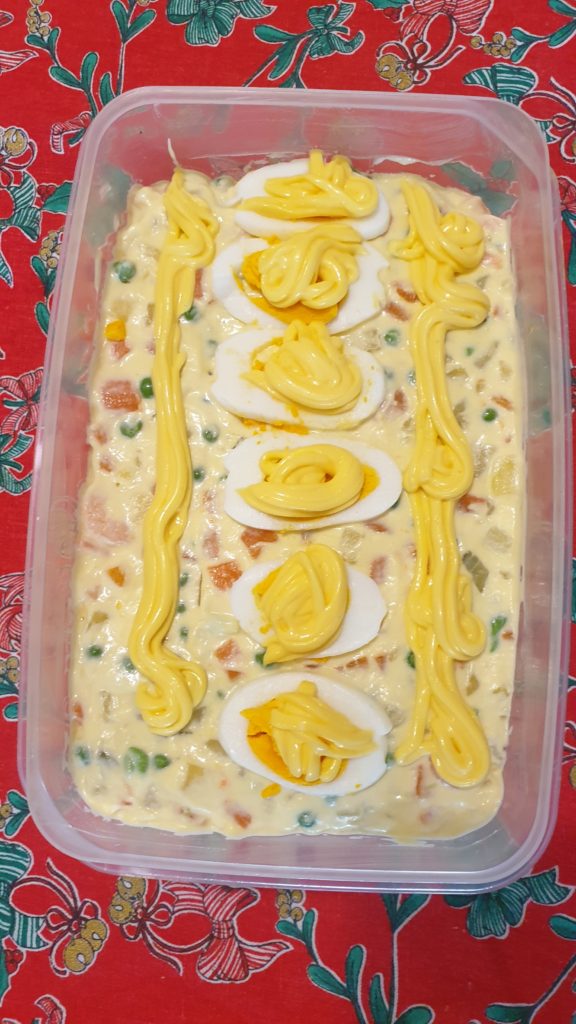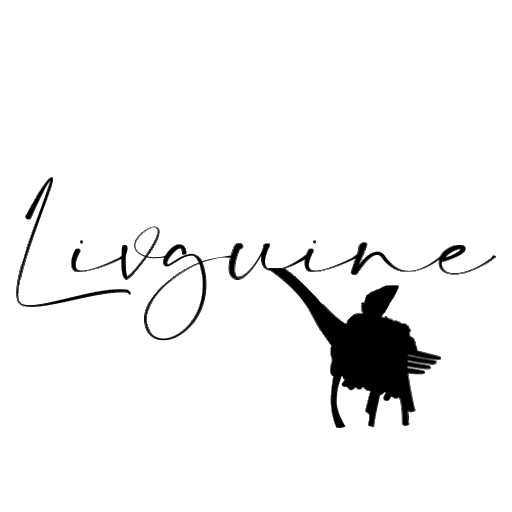Have you tried Russian salad before? It’s also known as insalata russa in Italian or Olivier salad in Russian. This creamy vegetable salad is a popular antipasto throughout Italy and especially in my region Piedmont. Read on to learn more about this salad and how to make my boyfriend’s father’s delicious recipe.

Piedmont Tour 2023 & 2024
Want to visit Turin with a local? Join our Untold Italy Piedmont tour in Spring or Fall in 2023, 2024 or even 2025. We’ll show you Piedmont from a local’s perspective, getting off the beaten track and taking you to all the best places. We spend 2 nights in Turin and 2 nights in Le Langhe eating, drinking and exploring our way around. Find out more now!
What is Russian salad?
Russian salad is a creamy vegetable salad. It’s made with boiled vegetables in a creamy mayonnaise dressing. Normally, it’s made with boiled potatoes, carrots, peas before being tossed with cornichons and coated in a mayonnaise sauce. Traditionally, shredded chicken was also added to the recipe but there are many variations and you can even add celery, capers and whole cooked eggs depending on your personal tastes.
The first time I ever tried this antipasto was when I moved to Piedmont. I was working at a beautiful organic winery called Cascina Iuli and on my very first night there was a huge dinner party to celebrate the owner, Fabrizio’s, birthday. Beautiful platters of food were set out on long tables in the courtyard, including this salad. Since living in Piedmont, I’ve seen this popular dish time and time again and come to really love it when it’s done well.
Where does Russian salad come from?
The first time I ever heard about Russian salad was in Tuscany while I was working at a beautiful agriturismo called Fattoria di Statiano. One night, we started talking about Russian salad with the two Russian girls working there with me. They couldn’t understand why it was called Russian salad as they’d never heard of it before. We later came to realise in Russia, it’s known as Olivier salad, a French name that helps to create further confusion!
The origins of the dish date back to at least the 1880s, when Belgian chef Lucien Olivier created it for perhaps the first time in Russia. Olivier was chef of the Hermitage restaurant in Saint Petersburg at the time and made the dish with the addition of ham, anchovies, crayfish and even truffles!
Other tales include one about Catherine de Medici’s Italian chef bringing the recipe to France with them. The story goes that her chef Ambroise mixed elements of Italian and French cuisine together to create the dish.
Perhaps my favourite story is the one that involves my region Piedmont. In 1800, the dish was served to Tsar Alexander III when he visited the royal family in Turin.
By the early 1900s insalata russa began to appear in Italy and throughout other European countries, retaining its popularity to this day.
What to serve with Russian Salad
Russian salad is a classic dish during the antipasto course. It makes for an excellent plate to bring along to a dinner party and eat alongside other classic Piemontese dishes like tomini cheese, carne cruda, grissini, lingua al verde (tongue in green salsa).
How to make Russian salad
Russian salad ingredients
- 100g diced carrots, potatoes and peas
- 50g diced cornichons
- 100g cooked prawns (shrimps) diced
- 2 boiled eggs (cooked for 9 minutes in boiling water, Massimo is very specific about 9 minutes!)
- Handful of capers for decoration
Russian Salad Dressing Ingredients
- 1 egg cold
- 210-230 ml Sunflower oil
- 2 tbsps apple cider vinegar
- 1-2 tbsps plain yoghurt
- Pinch of curry powder or paprika if you like it spicy
- Boil a big pot of salted water. When the water is boiling, add the carrots and cook for 7 minutes until they are cooked but retain some crunch.
- After 2 minutes, add the potatoes to the water and cook for around 5 minutes. Again, you want the potatoes to retain some crunch.
- For the final minute of cooking, add the peas as they will cook very quickly. After the vegetables are all cooked drain them and leave to cool.
- Put your cooled vegetables and cornichons in a mixing bowl. Dress with extra virgin olive oil and salt.
- Add some cooked prawns (cooled) and mix through.
If you’re running short on time, you can mix through store-bought mayonnaise into your salad. However, Massimo assures me that for a truly fantastic insalata russa, you can’t beat homemade mayonnaise. Read on for the recipe!
6. Crack one cold egg into your mixing bowl and using an immersion blender start to whisk it. Slowly pour in between 210 and 230mls of cold sunflower seed oil and your apple cider vinegar. The motion should start with the blender slowing rising up as your mayonnaise comes together. If you like, you can add a few tbsps of plain yoghurt and a pinch of curry powder or paprika to taste.
7. Finally, stir your mayonnaise through the boiled vegetables and then pour out into a serving dish. Massimo likes to decorate his with piped mayonnaise, boiled egg slices and capers for an extra flourish.
Livguine Top Tips
- Use cold ingredients when making your mayonnaise. Put everything into the fridge for a few hours or even overnight before you start assembling. The use of cold ingredients will help to stop your mayonnaise from splitting.
- If your mayonnaise splits, don’t panic! You can add a few tbsps of hot vinegar to bring it back together. As Massimo says, there’s always a solution and a trick in the kitchen!
- If you prefer to stick to a traditional recipe, omit the prawns and use shredded chicken instead.
- Don’t overcook your vegetables! The last thing you want is a soggy bowl of limp veggies in a bowl of store-bought mayonnaise.
Let me know in the comments below what you think! I want to hear if you’ve made it before, or something similar. At home in Australia, the dish that comes closest is creamy potato salad or coleslaw, but neither are quite the same as the Russian salad.
If you’re looking for more antipasti to serve at a dinner party, try my recipe for carne cruda.
